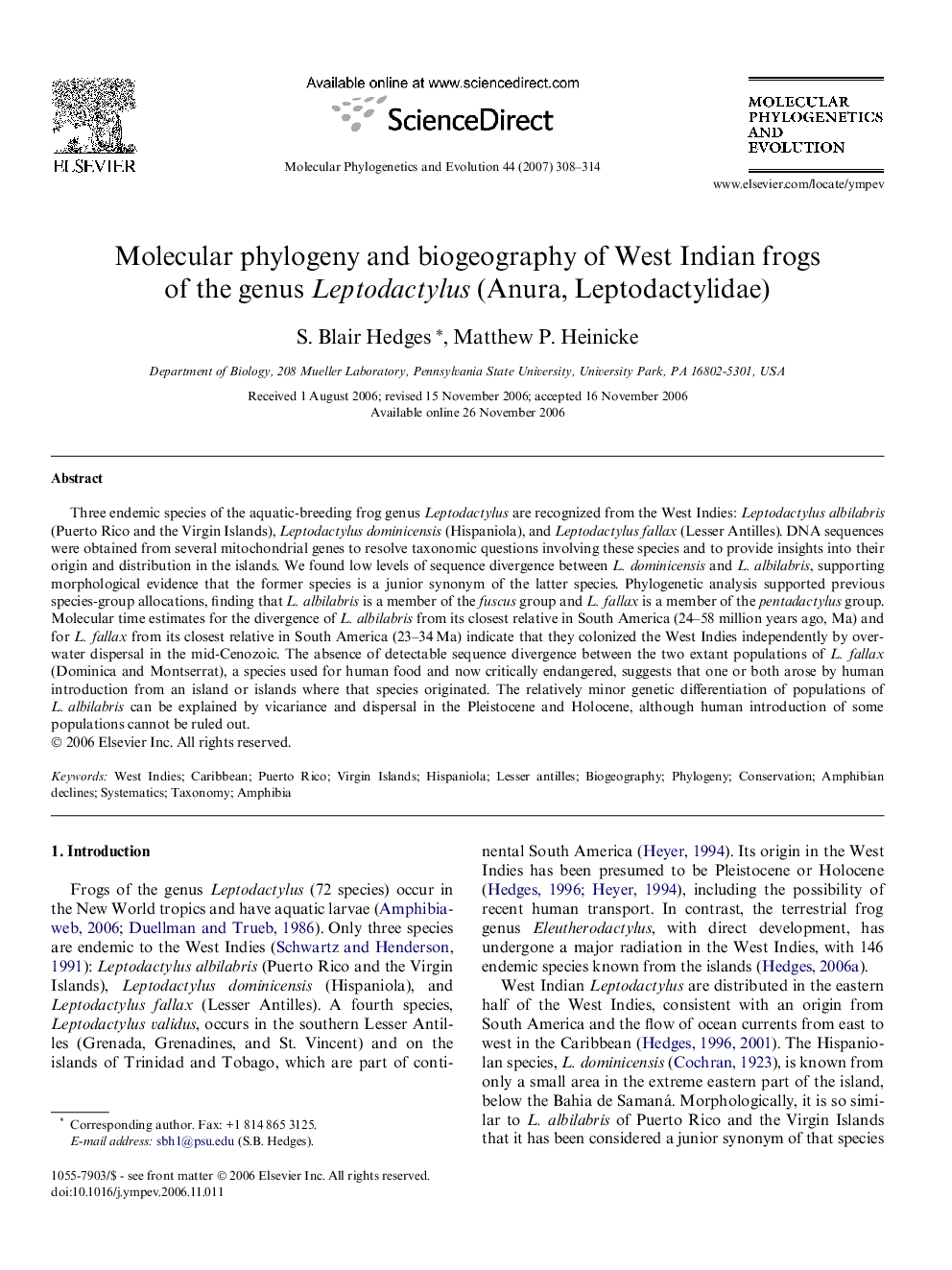| کد مقاله | کد نشریه | سال انتشار | مقاله انگلیسی | نسخه تمام متن |
|---|---|---|---|---|
| 2835716 | 1164351 | 2007 | 7 صفحه PDF | دانلود رایگان |

Three endemic species of the aquatic-breeding frog genus Leptodactylus are recognized from the West Indies: Leptodactylus albilabris (Puerto Rico and the Virgin Islands), Leptodactylus dominicensis (Hispaniola), and Leptodactylus fallax (Lesser Antilles). DNA sequences were obtained from several mitochondrial genes to resolve taxonomic questions involving these species and to provide insights into their origin and distribution in the islands. We found low levels of sequence divergence between L. dominicensis and L. albilabris, supporting morphological evidence that the former species is a junior synonym of the latter species. Phylogenetic analysis supported previous species-group allocations, finding that L. albilabris is a member of the fuscus group and L. fallax is a member of the pentadactylus group. Molecular time estimates for the divergence of L. albilabris from its closest relative in South America (24–58 million years ago, Ma) and for L. fallax from its closest relative in South America (23–34 Ma) indicate that they colonized the West Indies independently by over-water dispersal in the mid-Cenozoic. The absence of detectable sequence divergence between the two extant populations of L. fallax (Dominica and Montserrat), a species used for human food and now critically endangered, suggests that one or both arose by human introduction from an island or islands where that species originated. The relatively minor genetic differentiation of populations of L. albilabris can be explained by vicariance and dispersal in the Pleistocene and Holocene, although human introduction of some populations cannot be ruled out.
Journal: Molecular Phylogenetics and Evolution - Volume 44, Issue 1, July 2007, Pages 308–314